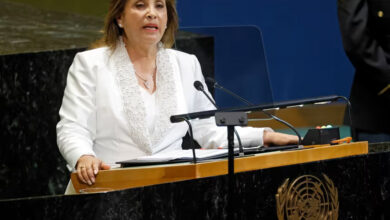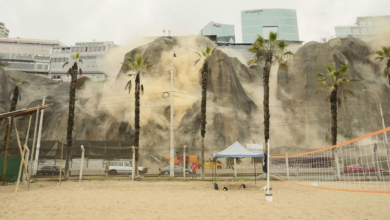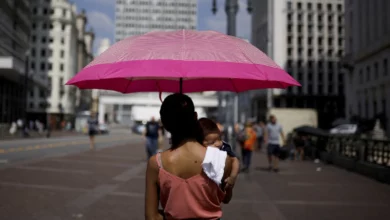
LIMA (Reuters) – Grace Yarango is only 18 and she’s already helped take down a president. Now she – and many other of Peru’s millennials and Generation Z youth – have their eyes on bigger prizes: changes to the constitution and reforming a widely reviled Congress.
The appointment of socially liberal lawmaker Francisco Sagasti on Tuesday – Peru’s third president in just over a week – has restored some calm, but the crisis has ignited wider anger at the country’s political classes and rampant corruption.
That could see Peru follow in the footsteps of Andean neighbor Chile, which in the wake of fiery street demonstrations last year is now rewriting its constitution.
“We want to fix the mistakes of past generations,” said Yarango, who expects to vote for the first time next year, in elections scheduled for April. “I feel part of this bicentennial generation, we want a better country.”
The protests were sparked by the abrupt removal in an impeachment trial on Nov. 9 of popular, centrist leader Martin Vizcarra by an opposition-led Congress, many of whom had been angered by Vizcarra’s anti-graft measures. Young Peruvians railed against the lawmakers as corrupt, waving banners calling for constitutional change.
Peru’s bicentennials could be crucial in the April election. Those between 20-34 years of age make up about 40 percent of those of mandatory voting age, official figures show. They have grown up in a rapidly changing Peru, which has seen years of strong economic growth on the back of mining exports and given them access to communication tools and information their parents could never have imagined.
Over half of those aged 18-24 said they took part in various anti-government protests this month, whether by marching or pot-banging in the streets, a poll by think-tank IEP showed. That compared to a third of those aged over 40.
Some 90 percent of Peruvians polled said they disapproved of Congress, and 65 percent did not identify with any political party, a potentially volatile mix as the economy battles a deep contraction after being hit hard by the coronavirus pandemic.
‘SPIRIT OF REBELLION’
Political leaders are starting to take note.
“The great citizen movement today belongs to the youth,” Sagasti, 76, said in his inaugural address after taking office.
“We have to call on the youth of all ages because there are adults who have a young spirit of rebellion, the youthful spirit of seeking a better country, and that is what we need.”
Reuters spoke to over a dozen Peruvians, mostly in their twenties, who vowed to keep protesting until the country’s leaders agreed to real change. Gathering in Lima’s Plaza San Martin earlier this week, they were draped in red and white flags and bearing signs saying ‘bicentennials.’
Many said they wanted to see Peru’s unicameral Congress overhauled. Others wanted a new constitution to replace what they described as an illegitimate magna carta, created by former strong-man President Alberto Fujimori in 1993, before many of them were born.
Most did not fully witness the violence of Fujimori’s government, but have seen one president after another become embroiled in corruption scandals.
“People are expecting not just for the presidents to change, but for the institutions to change,” said Cesar Landa, a leading constitutional lawyer. “This is a constitution-making moment.”
But challenges remain. The movement as yet has no visible leaders, and anyone under 25 is too young to run for Congress themselves.
The protests also met with fierce resistance from security forces, who were widely criticized by human rights organizations for use of excessive force. There are ongoing investigations.
And none of the political parties have made targeting young voters a cornerstone of their strategy – so far. But Peru’s youth has demographics on its side.
“Our generation has come together for this,” said 20-year-old Evelyn Borja. “This is the first time I feel a part of politics.”
Reporting by Marcelo Rochabrun; Additional reporting by Marco Aquino; Editing by Adam Jourdan and Rosalba O’Brien




